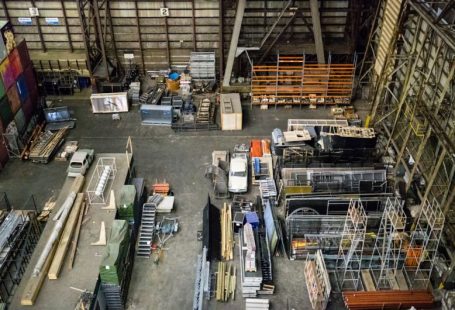In the rapidly evolving landscape of technology, virtual reality (VR) and micro PCs are two trends that are capturing the imagination of tech enthusiasts and consumers alike. These cutting-edge technologies are revolutionizing the way we interact with computers and experience the digital world. Let’s delve into the world of VR and micro PCs to understand what they are, how they work, and the implications they have for the future.
The Rise of Virtual Reality
Virtual reality, often abbreviated as VR, is a simulated experience that can be similar to or completely different from the real world. By using a head-mounted display (HMD) and motion tracking sensors, users are transported to a computer-generated environment where they can interact with the surroundings in a seemingly real way. VR technology has made significant strides in recent years, with applications ranging from gaming and entertainment to education and healthcare.
Immersive Gaming Experiences
One of the most popular uses of VR technology is in gaming. With VR headsets like the Oculus Rift, HTC Vive, and PlayStation VR, gamers can dive into immersive virtual worlds where they can explore, compete, and interact like never before. The ability to look around and move within the virtual environment creates a sense of presence that traditional gaming experiences cannot match. From thrilling first-person shooters to mesmerizing puzzle games, VR has opened up a new frontier in gaming.
Training and Simulation
Beyond entertainment, VR is finding applications in training and simulation across various industries. From military simulations to medical training, VR allows users to practice skills and scenarios in a safe and controlled environment. For example, surgeons can hone their skills in virtual surgeries before operating on real patients, while pilots can practice flying in virtual cockpits to improve their proficiency. The immersive nature of VR makes it an invaluable tool for training where real-world practice is limited or too risky.
The Promise of Micro PCs
On the other end of the spectrum, micro PCs are compact computing devices that pack a powerful punch in a small form factor. These miniature computers, often no larger than a credit card, are capable of running full-fledged operating systems like Windows, Linux, or Android. Despite their small size, micro PCs offer impressive performance that rivals traditional desktop computers, making them ideal for a variety of applications.
Portable Computing Power
Micro PCs are a game-changer for users who need computing power on the go. Whether you’re a digital nomad, a field researcher, or a creative professional, having a compact yet capable computer at your disposal can greatly enhance your productivity. Micro PCs like the Raspberry Pi and Intel NUC provide a versatile platform for running software, developing projects, and even hosting servers in a space-efficient manner. With the ability to connect to external displays, peripherals, and networks, micro PCs offer a flexible computing solution in a pint-sized package.
Home Automation and IoT
Another area where micro PCs shine is in home automation and the Internet of Things (IoT). By leveraging their computing capabilities and connectivity options, micro PCs can serve as central hubs for controlling smart devices, monitoring sensors, and automating routines in your home. Whether you’re setting up a smart security system, a home media server, or a weather station, a micro PC can act as the brain that ties everything together seamlessly. The modular nature of micro PCs also allows for easy customization and expansion as your smart home ecosystem grows.
The Future of Computing
As VR and micro PCs continue to advance and converge, the possibilities for innovation and integration are endless. Imagine a future where virtual reality experiences are powered by ultra-compact micro PCs, seamlessly blending digital worlds with physical environments. From immersive virtual meetings and collaborative workspaces to interactive educational simulations and augmented reality applications, the combination of VR and micro PCs holds great promise for shaping the way we live, work, and play in the digital age.
In conclusion, virtual reality and micro PCs represent two sides of the same technological coin, offering immersive experiences and powerful computing capabilities in compact and versatile packages. Whether you’re exploring virtual realms or harnessing the potential of micro computing, these technologies are reshaping the way we interact with technology and unlocking new possibilities for creativity and innovation. Embrace the future of VR and micro PCs, and unlock a world of endless possibilities at your fingertips.





